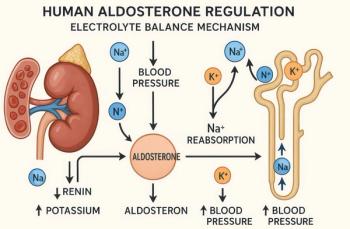
Born to Be Sick: Birth Month Predicts Disease Risk
Researchers discovered 16 new birth month–disease associations, more than half of them cardiovascular, contributing to better understanding of lifetime disease risk.
Seasonality and Disease Risk, Then and Now
Hippocrates, the founder of medicine, made a connection between diseases and seasonality millennia ago. In the more recent past, several studies have demonstrated seasonal relationships that link birth month with neurological, reproductive, endocrine, and immune/inflammatory disorders as well as overall lifespan. Lifetime disease risk is indeed affected by birth month. For most conditions, however, the relationships have not been determined.
Now a retrospective population study conducted by researchers at New York-Presbyterian/Columbia University Medical Center has examined the relationship between seasonal affects at birth and lifetime disease risk for 1688 conditions. Their algorithm,
See highlights of the SeaWAS findings on the pages that follow:
16 New Birth Month–Disease Associations
• Of 1688 studied diseases, 55 were significantly dependent on birth month.
• Of the 55 birth month–dependent diseases, 19 had been reported in the literature and 20 were for conditions with close relationships to those reported.
• The researchers discovered 16 associations with birth month that had not been studied explicitly before now.
Strong Cardiovascular Ties
Nine of the 16 associations were related to cardiovascular conditions:
- Atrial fibrillation
- Essential hypertension
- Congestive cardiac failure
- Angina
- Cardiac complications of care
- Cardiomyopathy
- Pre-infarction syndrome
- Chronic myocardial ischemia
- Mitral valve disorder
Noncardiovascular Conditions Also Linked
Seven discovered associations were noncardiovascular:
- Acute upper respiratory infection
- Bruising
- Nonvenomous insect bite
- Venereal disease screening
- Primary malignant neoplasm of prostate
- Malignant neoplasm of overlapping lesion of bronchus and lung
- Vomiting
Patterns Cluster by Disease Type
• Of the 9 cardiovascular associations, 6 had high-risk birth months in March or April. The high-risk month was January for essential hypertension and cardiomyopathy and June for pre-infarction syndrome.
• For all 9 cardiovascular associations, the low-risk month was in the fall (October for atrial fibrillation, essential hypertension, congestive heart failure, and pre-infarction syndrome; September for angina, cardiac complications of care, and cardiomyopathy; and November for chronic myocardial ischemia and mitral valve disorder).
• Of the 7 noncardiovascular associations, 5 had high-risk months later in the year (October for acute upper respiratory infection, nonvenomous insect bite, and venereal disease screening; September for vomiting; and December for bruising). Low risk for these 7 associations was in 7 diffferent months.
• Persons born in March were at higher risk for cardiovascular diseases but at lower risk for respiratory diseases and neurological conditions. For persons born in October, the opposite was true.
Disease Category Dependency
• Disease risk status breakdown by birth month illustrates disease category dependency. May, June, August, January, and December provide no overall advantage or disadvantage to those born in that month.
• November and other months are more likely to be associated with increased disease risk; February and others tend to be associated with decreased disease risk.
• May and July had no at risk diseases.
Cardiovascular Associations Discovered
• Mitral valve disorder shows a clear bimodal seasonal pattern-a major disease risk peak among persons born in March and a smaller disease risk peak among those born in August.
• Atrial fibrillation peaks among persons born in March, with a trough between September and November.
• Children born to survivors of the H1N1 1918 subtype were associated with a more than 20% excess risk of cardiovascular disease, suggesting a relationship between maternal infection and cardiovascular disease risk that is independent of maternal malnutrition. Maternal infection during January-March could contribute to the increased cardiovascular disease risk among children born in those months.
Lifespan Links
• Persons born in October–December live longer than those born in April–June, one study found.
• The relationship between cardiovascular disease risk and lifespan is established. The relationship between lifespan and birth month could be explained by increased cardiovascular disease risk.
• The relationship between cardiovascular disease and birth month could be mediated through a developmental vitamin D-related pathway. Serum 25-hydroxyvitamin D levels are lower and parathyroid hormone levels are higher during the winter when no supplementation is given.
• Even with maternal supplementation, seasonally dependent vitamin D deficiency has been observed among breastfed infants and newborns.
• Levels of parathyroid hormone and vitamin D are associated with cardiovascular disease. Elevated parathyroid hormone is correlated with increased heart failure in older men.
• Vitamin D deficiency in adolescents results in an increased likelihood of hypertension and high-density lipoprotein cholesterol.
Take-aways:
• A new algorithm, SeaWAS, confirms many known connections between birth month and disease.
• Researchers discovered 16 associations with birth month that had not been studied explicitly, 9 of them related to cardiovascular conditions. The associations strengthen the link between cardiac conditions, early development, and vitamin D.
• Seasonally dependent early developmental mechanisms might play a role in increasing lifetime disease risk.
Newsletter
Enhance your clinical practice with the Patient Care newsletter, offering the latest evidence-based guidelines, diagnostic insights, and treatment strategies for primary care physicians.






















































































































































































































































































